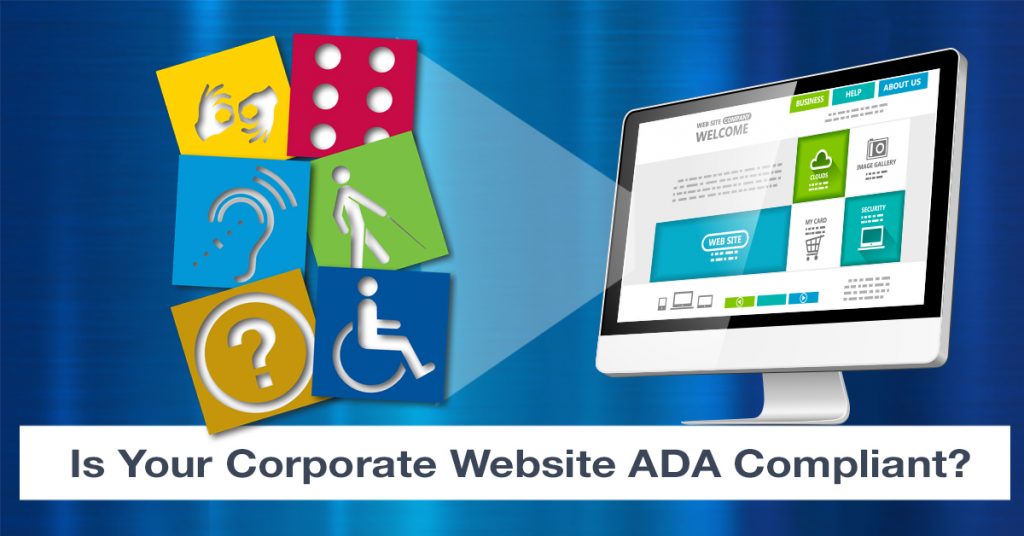
Is Your Corporate Website ADA Compliant?
What does the American Disabilities Act (ADA) of 1990 have to do with commercial websites in 2019? This isn’t the setup for a lame corporate joke. The truth is, the law created on the cusp of the internet age is very relevant to today’s digital properties and ignoring it could put your business at risk for a costly lawsuit.
Although the official ADA makes no specific mention of “websites” or their content, courts have interpreted the law to mean that any digital property belonging to a company should be accessible to all individuals including those with disabilities. And since abiding by the ADA is non-negotiable, large corporations and small businesses alike that don’t ensure their websites are presenting their content in a way that all individuals can use are easier to target than sitting ducks. It’s always hunting season for the sly online opportunist.
The Trend is Up
ADA compliance is a hot ticket to payday for those who target small and large businesses by slamming them with lawsuits and forcing settlements for non-compliant websites. According to Digital Authority Partners, things are regularly heating up: “…Lawsuits are on the rise, up 8% since 2016, with hundreds of ADA [non]compliance lawsuits filed every month.”
In the event that a business pays out in a settlement, it’s also required to make its site ADA compliant. Furthermore, just because a business is sued once for non-compliance doesn’t mean it can’t happen again, with the average suit costing upwards of $75,000 according to Digital Authority Partners.
Identifying Compliance
But how do you know if your site is ADA compliant? It turns out, compliance is complicated, mostly because the Act itself doesn’t clearly define compliance for websites. However, according to recent court rulings, there are 38 criteria that determine compliance. There are several online resources, like this ADA Compliance Checklist, but as a general rule of thumb, the most important thing is to make sure your site and all of its content is accessible to all and can be coherently interpreted by a site reader.
The entire checklist can be reduced into two key themes: if the content is visual then add an option for sound and if the content is reliant on audio, then add a strong visual so that any individual has access to the content in an equally meaningful and interpretive way. Although this doesn’t cover everything, these two key themes are a good place to start when you begin to review your site for compliance.
Code of Compliance
Expert programing code by good developers will make your website compliant and accessible to all–every image has an alt description, every video has closed captioning and every landmark is represented in colloquial language rather than confusing, complicated JavaScript and CSS code that would make a website entirely useless to an individual relying on a screen reader to interpret the site (not so fun fact: screen readers can’t read JavaScript or CSS).
How to Become Compliant
As with any complicated task, it’s always best to hire a professional, but buyer beware. Many compliance agencies aren’t helping businesses to actually make their sites ADA compliant. Instead, they’re exploiting companies by charging high fees to identify compliance issues without the solutions to fix them. Before hiring a company for ADA compliance assistance, it’s important to make sure they have the expertise and developers on hand to provide progress, rather than simply auditing your site.
For more insights and ideas on how to move your brand or business forward for greater visibility, contact SMM Advertising.
[WD_Button id=9306]
